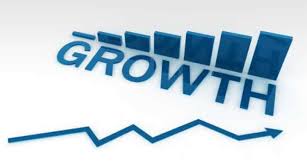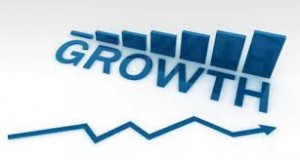A nation growing at a constant rate which is sustainable in the long run is said to have a balanced growth. Balanced growth path involves growth in all the sectors of the economy, be it exports or investments, in a balanced way (proportionally). The nation must define the optimal capital stock for which it faces such a growth rate. It takes into account factors like investment and saving rate, depreciation, population growth, inflation and technological advancement.
How close is India to such a growth? What can be said about its current growth rate and the one expected for the future years? How do the factors mentioned above affect the balanced growth path? India’s growth rate in 2012, 2013 and 2014 was 4.7%, 5% and 5.6% respectively. Economists expect the growth rate to be 6.4% in 2015. The inflation (GDP deflator) rate in 2012 and 2013 was 7.2% and 6.9% while the population growth rate in the same years was 1.3% and 1.2% respectively. The foreign direct investment (out of GDP) rate in 2012 and 2013 was 1.3% and 1.5% respectively. Knowing the fact that investment rate has a direct relationship with the growth rate while population growth rate and inflation rate have an inverse relationship, it is evident that the difference between the two has declined in 2012-13, which is signaling that the gap between the current growth rate and balanced growth rate is reducing. This also means that the economy is heading towards the optimal capital stock required to achieve the path, given the saving rate. (Note: According to the simplest version, change in capital stock is equal to the difference in investment and depreciation/inflation/population growth.) But since technological progress is difficult to measure and also considering that few relevant factors have been ignored, one must not jump on conclusions.
What is believed is that since factors (specially saving rate) are under constant variations, the parameters used to estimate the balanced growth rate also alter continually. This would imply that the sustainable growth rate must be revised regularly so as to keep track on the economy’s actual (real) position and then act accordingly.
(All the data (numbers) are according to the ‘old estimates’ of the World Bank records.)
Click here for government certification in Accounting, Banking & Finance





41 Comments. Leave new
Good job done. It has indeed helped me while i was making my assignment.
Haha Thanks ! I’m glad that it helped you 😀
a very good state of Indian GDP will rise India globally.
Since the article doesn’t use jargon, it has helped people of non-economics background to grasp about the topic.
LOL thats so correctly pointed out… Thanks Ankita
Great piece of work !
Haha This is so weird because I was going to post the comment on a article named – Solow Growth Model and i accidentally end up here :/
Really helpful for assignment work.
Thanks Shradha 😀
helpful enough.
Im glad !
The information is really helpful
Thats really great Thanks !
Your articles are informative !
Thanks Aishwarya
Your article is worth reading.
Thank you Farheen. It means a lot to me.
it provides basic knowledge to non economic background ppl tooo…. one can summarise it in mind easily….
Thanks 😉
i think a little more past data accompanied with graphs could have made the article more comprehensive… by the way this is also equally good…
Thank you so much. I just wanted to have people a little glimpse of the real world through the data given, so didn’t add much to it. But i would surely take that advice.
good job!!!
Thanks a lot 😉
gud work
keep on writing dear
Sure. Thanks loads.
you write conceptually.. keep on writing… i would love to read more of your works
Thank you. I would never stop that !
good job
keep on writing
Thanks !
Well written article
Thanks 🙂
Good work…!
Thanks ! Means a lot 🙂
Well explained!
Thanks 🙂
Balanced growth can be attained only by encouraging the Make In India dream of NaMo.
Very informative with the stats!!
good article…could have been better..
Very well wriiten 😀 Good work 😀
You have compiled the best info 😀 in one wonderfull post 😀
The stats and all that you provided in the post was really good 😀
It was easy to understand the conept with such way of presentation 😀
Good work 😀
informative…
nice articulation Shatakshi 🙂
Good Job